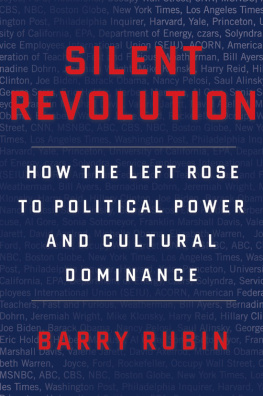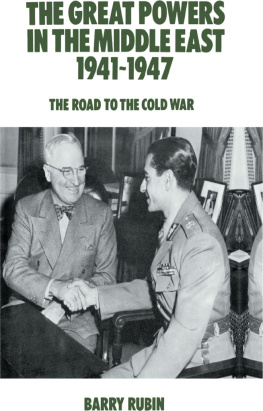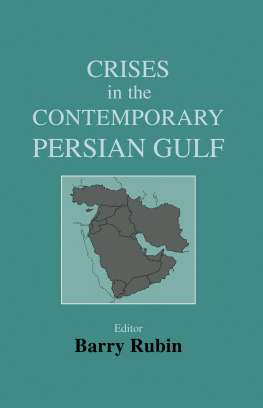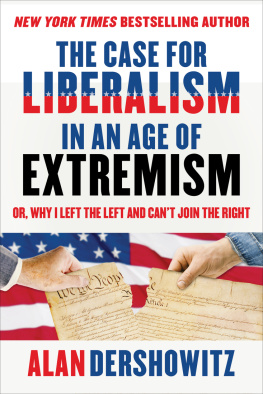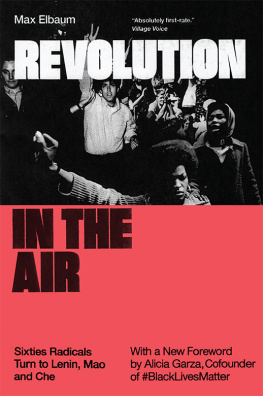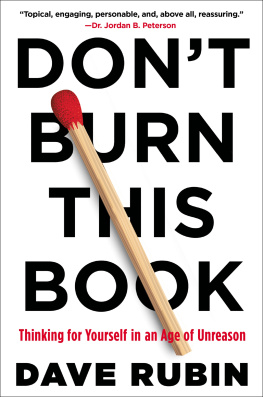FOR JUDY, GABRIELLA, AND DANIEL
CONTENTS
Thanks to Yeru Chernilovsky and Jonathan Spyer.
This is a contrarian book. A political and social movement has transformed the United States. That movement and President Barack Obama, who was, we should remember, only a small part of it, is praised, exalted, and celebrated by many millions of people who call themselves liberals. Meanwhile, they are condemned, derided, and ridiculed by many conservatives.
And yet that is a strange deviation from all of American history. In fact, it is a break from, a break with, the entire history of liberalism as well. Indeed, it is an ideological defacing of liberalism. But that is because it is to camouflage the real identity of this doctrine, which seeks to impersonate liberalism: radicalism. There is a big difference.
It is that impersonation that has brought this movement the success it has enjoyed. Without this disguise, it would appeal to few people. Words like radicalism , extremism , Socialism , Communism , Marxism , anti-patriotism sound less attractive than multiculturalism . One reason, of course, is that these ideologies are well-known failures, even disasters that bear little in common with what has made America a brilliant success, ever expanding its liberties and prosperity.
Yet that is the key to an explanation of what happened in America in the early twenty-first century. Put very simply there was a four-stage process.
Step One: Radicalism took over liberalism.
Step Two: The new liberalism portrayed its only opponent as a reactionary, right-wing conservatism.
Step Three: The radicalism (liberalism) represents all that is good in America and a correction to all (a lot of it) that was evil.
Step Four: The new radicalism (liberalism) has a monopoly on truth and a right to fundamentally transform America.
All that is good in American historyracial equality, workers rights, environmentalism, womens rights, the very acts of intellectualism or cultural creativity themselvesare awarded to liberalism, yet nothing is acceded to conservatism or traditional liberalism.
But if there was a one percent in American history, those were the radicals. The liberal-conservative spectrum was the ninety-nine percent.
This requires a considerable contradiction. On the one hand, the radicals (liberals) want to claim everything good about Americas greatness and achievements. On the other hand, they claim that America has mostly been evil.
As for traditional liberalism, it has become extinct. A doctrine that enjoyed at least 25 percent support among the population and periodically won a majority of votes is simply gone.
Was the fruit of radicalism in U.S. history so splendid that they can claim credit for substantial achievement? Of course not. Has conservatism not meant the real ballast of American society, contributing the moral, religious stabilizing factors? Of course.
Then there is the balance of the degree of free enterprise in the economy, the balance between freedom and responsibility, and other social factors. The liberalconservative spectrum has been the basis of Americas success and freedom. Wrecking it would destroy them. This new situation is a terrible threat to everything that has gone right in America for two centuries.
On January 20, 2013, President Barack Obama used his second inaugural address to express his views on American history, political philosophy, and strategy.
Although his phrases rang with continuity with his predecessors, they showed how unprecedented Obamas views and measures were. This combination of fundamentally transforming Americaa phrase Obama used just before his first inaugurationand concealment of the drastic change happening was a hallmark of contemporary American politics.
What makes us exceptionalwhat makes us Americanis our allegiance to an idea, articulated in a declaration made more than two centuries ago: We hold these truths to be self-evident, that all men are created equal, that they are endowed by their Creator with certain unalienable rights, that among these are Life, Liberty, and the pursuit of Happiness.
Here was an appeal to patriotism and the basis of American democracythe Constitution, American exceptionalism, and Declaration of Independencewhich Obama had not used during his first term. On the contrary, according to him, the Constitution provided only negative liberties and there was no such thing as American exceptionalism. On several occasions he had even misquoted the very words he used from the Declaration of Independence.
Obama was merely adjusting to criticisms that he did not accept the American political structure as previously accepted, that he was off the liberal-conservative spectrum. Indeed, Obama continually proved that point, albeit in the guise that his reinterpretation was merely modernization needed to bridge the meaning of those words with the realities of our time.
In fact, though, he was indeed forging a new and very different path toward fundamentally transforming the American system, to use his words. The altered approach was one of an unprecedented degree of statism, an imperial presidency that went far beyond Richard Nixons dreams: record high levels of government regulation, taxation, and debt.
These policies were accompanied by social developments in American institutions, imposing a politically correct and multicultural ideology; an extreme lack of diversity in universities and the mass media; and political indoctrination in schools that narrowed permissible debate.
What was being created, then, was a different system from the one through which America achieved success and prosperity. Yet the fact that such changes were occurring was everywhere denied even as it was happening.
That factor, a new political philosophy when taken as a whole, was embodied in Obamas speech and in literally thousands of media articles and broadcasts, lectures in college courses, grade and high school curricula, activities of nongovernmental organizations, regulations written by government agencies, and in every other aspect of American life. All pushed in the same direction and used the same fundamental arguments.
For example, Obamas inaugural speech was filled with loaded phrases not balanced by other, contrary ideas about independent actions by citizens or other institutions.
Rights may be self-evident, theyve never been self-executing. The guarantor of rights was the federal government.
America could only succeed if there was a national infrastructure and only the government could produce or build [r]ailroads and highways to speed travel and commerce; schools and colleges to train our workers.
A free market only thrives when there are rules to ensure competition and fair play. But it had always thrived under fewer rules than Obama wanted, while it had plummeted with the level of rules and definition of fair play Obama had imposed during his first term.
Obama did add that there has been skepticism of central authority, and he acknowledged that government cant do everything, so for Americans, celebration of initiative and enterprise, our insistence on hard work and personal responsibility, are constants in our character.
But that last concept was only raised to be dismissed by a very big but.
Times have changed, continued Obama, and so must we; that fidelity to our founding principles requires new responses to new challenges; that preserving our individual freedoms ultimately requires collective action. The collective, as he made clear repeatedly, is embodied in the national government, and that response requires a bigger government, more taxes, more spending, and more regulation.

